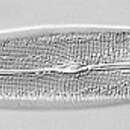en
names in breadcrumbs


The Oomycota (or Peronosporomycetes) is a group that includes more than 800 species that may be saprobic or parasitic on terrestrial or aquatic plants and animals. The oomycetes--including Phytophthora, Pythium, and downy mildews--have long been considered to be fungi because, like fungi, they obtain their nutrients via absorption and many of them produce the filamentous threads characteristic of most fungi. However, molecular phylogenetic investigations have found that the oomycetes are more closely related to the heterokont algae (i.e., the Phaeophyta [brown algae], Xanthophyta [yellow-green algae], Chrysophyta [golden algae], and Bacillariophyta [diatoms], and several smaller groups) than to the true Fungi (Chytridiomycota, Glomeromycota, Zygomycota, Ascomycota, and Basidiomycota). Thisconclusion is supported by a range of ultrastructural data (i.e., the fine structure revealed by electron microscopy).The oomycetes are now often included in a phylum Heterokonta within a kingdom Chromista or in a phylum Stramenopila (or Straminopila).
A number of characteristics distinguish the Oomycota from the true Fungi. These include differences in sexual reproduction (oomycetes produce oospores whereas true fungi produce zygospores, ascospores, or basidiospores), in the nuclear state of the vegetative mycelium (diploid in oomycetes but mostly haploid or dikaryotic in true fungi), in cell wall composition (beta glucans and cellulose in oomycetes, chitin--rarely with cellulose--in true fungi), type of flagellae (when present, flagellae are typically of two types in oomycetes--posteriorly directed whiplash and anteriorly directed fibrous--with just a posterior whiplash type present in true fungi), and mitochondria (cristae tubular in oomycetes but flattened in true fungi).
One especially notorious oomycete is Phytophthora infestans, the cause of late blight of potatoes. As a result of the famine in Ireland caused by this disease, around one million people died and another 1.5 million emigrated. A number of other plant diseases are caused by species of Phytophthora, including sudden oak death and ramorum blight caused by P. ramorum, cacao black pod caused by P. megakarya, and many root rot diseases, such as black shank of tobacco. Other members of the group include pathogens such as Pythium aphanidermatum, the cause of cottony blight of turf grasses; Peronospora tabacina (tobacco blue mold); Plasmopara viticola (downy mildew of grape); Plasmopara halstedii (sunflower downy mildew); and many others. Finally, a group traditionally placed in the oomycetes is the Saprolegniales, or water molds, which cause diseases of fish and other aquatic vertebrates.
More information on the Oomycota can be found in this online adaptation of Rossman and Palm (2006).
(Rossman and Palm 2006 and references therein; Rossman and Palm 2008 and references therein)